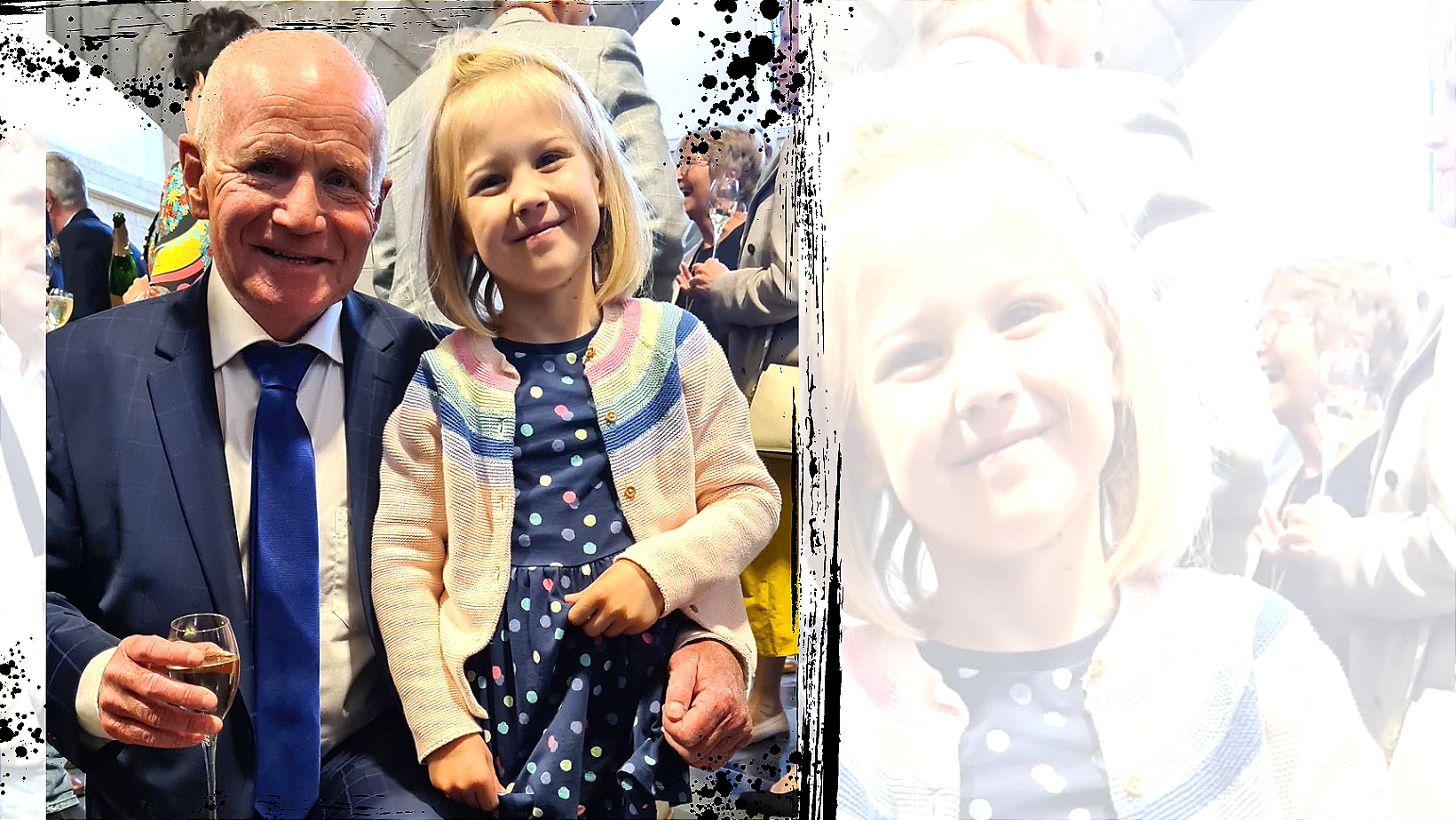CAN CHILDREN WITH CHD GET THEIR EARS PIERCED? - with Marc Gewillig, em. prof. dr.
Emanuela’s wish for earrings seemed innocent, but with her complex heart condition, the decision to pierce her ears carried risks. Was there a safe way to do it? Here's how we navigated conflicting medical advice.

One day, a girl arrived at school, shining brighter than usual. She entered her class with a big smile, and all the girls gathered around her, marveling at her new earrings. She had her ears pierced. She was five years old.
From that day on, our Emanuela couldn't stop talking about wanting the same thing. She didn't ask how it was done or if it would hurt; she simply knew she wanted something sparkling on her earlobes. Day after day, we heard about the girl and her earrings, and others following the trend. Emanuela was relentless in pleading to join them. When I vividly explained the process - needles and all - she wasn't fazed. So, I promised what I could: we'd ask her cardiologist at her next appointment, which was still a few months.
The Waiting Game
As time passed, Emanuela remained patient, though her anticipation grew. On the day of her appointment, she was ready to ask the question all by herself, feeling grown-up now that she was six and, as she believed, about to get an adult-kind of earrings. I tried to prepare her for the possibility that the answer might not be what she wanted to hear. I reminded her about her special heart, emphasizing her strengths, but explaining that it couldn't handle everything other children's hearts could. None of this dimmed the sparkle in her eyes.
Once in the doctor's office, she worked up the courage to ask. Peeking from behind my back with wide eyes and a hopeful smile, I could barely hear her question: "Can I have my ears pierced?"

The First No
She held herself together until we left the hospital. Then, she broke down in tears. For a week, I did my best to comfort her and explain why. I told her about the connection between ear piercings and the heart, and how piercing could lead to an infection that might be very dangerous for her, especially due to the risk of endocarditis.
Children's Hospital of Philadelphia
Our Belgian cardiologist, who had only recently taken over Emanuela's care, explained that her complex heart condition, with its many complications over the years, meant that caution was warranted. Since she was still young, waiting a year or two wouldn't hurt. Her opinion was also influenced by the fact that in Belgium, piercings are often done in unsupervised and uncontrolled jewelry shops, or piercing and tattoo parlors. "If she were my child, I wouldn't let her do it just yet," the cardiologist said.
Since Emanuela was born, whenever I feel unsure about a medical decision, my go-to question for doctors is: "What would you do if this were your child?" So, that answer convinced me - ear piercing was off the table, at least for now.
Weighing the Options
Still, I couldn't stop thinking about it. I hated seeing my daughter so disappointed, and a part of me wondered if there was a safe and controlled way to do it. Without getting Emanuela's hopes up, I sought a second opinion.
Our Slovak cardiologist seemed surprised that this was even an issue. He acknowledged that infection and endocarditis were theoretical risks but mentioned that, in his practice, he had never seen complications arise from ear piercings. In fact, in Slovakia, it's common for mothers to have their babies' ears pierced at a very young age. Building on this cultural tradition, piercings are done by a paediatrician in a controlled environment. That solved one part of our problem. Now I just had to figure out how to have it done safely. So, I sought a third opinion.
Our former Belgian cardiologist, now retired but still available for consult, tipped the scales. I asked him: If we pierced Emanuela's ears while on holiday in Slovakia, could we follow up with tests in Belgium to monitor for infection? Could we take preventive antibiotics, as is sometimes done for dental work on children with CHD, to reduce the risk? Essentially, was there a safe way to do this?

Marc Gewillig, em. prof. dr., a retired Head of Paediatric Cardiology at University Hospital Leuven, Belgium, and a specialist in Fontan physiology, provided these guidelines:
Ear piercings do not carry significant risks if done properly:
- The procedure should be performed in a clean environment.
- A good local antiseptic should be applied to clean skin.
- Earrings should be high-quality (no nickel or brass; use gold, silver, platinum, etc.).
- The holes and earrings should be well-maintained and cleaned afterward.
- There is no need for antibiotics or medical standby.
- In case of allergy or infection: remove the earrings, start antibiotics, and avoid piercings in the future.
(Marc Gewillig, em. prof. dr., paediatric cardiologist, Leuven, Belgium)
The decision was still not easy. Piercing ears isn't a necessity, so why take the risk, no matter how small? I wondered if such decisions were even mine to take. Shouldn't Emanuela decide for herself when she's older? After all, there might come a time when she'll want other piercings or tattoos - fun, but unnecessary perks. I was torn.
Was I trying to spoil her, to make her every wish come true? Maybe. Or did I feel guilty about all the things her heart condition would prevent her from doing? Probably both. In the end, I knew one thing: if piercing her ears would ease her mental burden, make her feel more included, and less different - and if it could be done safely - the question was no longer why but why not?
I used to be firmly against it, but then I never saw problems. Now, I tend to be more permissive, as long as the rules are respected.
(Marc Gewillig, em. prof. dr., paediatric cardiologist, Leuven, Belgium)

It Was Meant to Be
As fate would have it, the decision was made for us. One day, we were at the paediatrician’s office because we had run out of medicine that Emanuela needed. The moment we walked in, Emanuela spotted a shelf full of cute little earrings on display. I seized the moment and asked the doctor to show her the needles and the piercing gun, hoping it would scare her just enough to delay the decision for another year or two.
Instead, we left that office with little flowers in her ears - tiny glass petals with a pink center. She chose them herself, and the piercing was done on the spot. The paediatrician recommended a wound disinfectant spray and prescribed bacitracin cream - an antibiotic cream used to prevent infections, to avoid any complications. Every evening, I clean Emanuela's earlobes, gently turn the earrings, which are made from medical-grade stainless steel, to keep them from sticking, and apply the cream around the area. It's been over a month now, and I'm relieved to report that we haven't had any problems so far.
As fate would have it... (Summer holidays in Slovakia - August 2024)
"Mucosa cannot be thoroughly cleaned, not even with 90% alcohol (if one could sustain the burning). Mucosa is always moist, providing an ideal environment for bacteria and fungi. In case of even minimal bleeding, bacteria can easily enter the bloodstream. In the course of my career, I have personally seen many cases of endocarditis resulting from piercings through mucous membranes."
(Marc Gewillig, em. prof. dr., paediatric cardiologist, Leuven, Belgium)
*MUCOSA is the soft tissue that lines body canals and organs in the digestive, respiratory and reproductive systems. It’s also called the mucous membrane. Body cavities with mucous membranes include nostrils, mouth, stomach, genitals, etc.
(Cleveland Clinic)
Medical Disclaimer
This article is for informational or educational purposes only. It does not substitute professional medical advice, diagnosis, or treatment. Always seek the advice of a physician or other qualified health provider.
